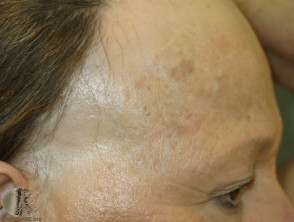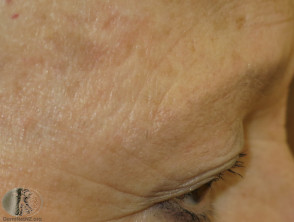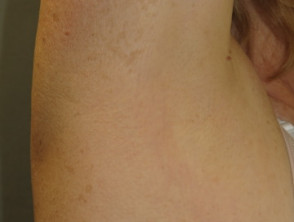What is Graham Little syndrome?
Graham Little syndrome is a rare variant of lichen planopilaris, an inflammatory form of scarring hair loss. It is also known as Graham Little-Piccardi-Lassueuer syndrome, in various combinations and permutations of these three names.
Who gets Graham Little syndrome and why?
Graham Little syndrome most commonly affects women in the age range 30-70 years, and in particular the middle-aged post-menopausal group.
The cause of Graham Little syndrome is not known. It may be an immune disorder. There have been rare familial cases and associations reported, the significance of which are unclear.
Clinical features of Graham Little syndrome
Graham Little syndrome is characterised by three clinical features:
- Progressive patchy scarring hair loss of the scalp
- Nonscarring thinning of the hair in the armpits and groin
- Spiky rough bumps based on hair follicles
Scalp hair loss is usually the first sign. Sometimes it is only noticed once a patch of hair loss is smooth and white, but roughness and redness have also been reported.
The armpit and pubic hair thinning can result in complete loss of hair in these sites.
The spikes based on hair follicles can develop rapidly on the trunk and/or limbs. Less commonly the eyebrows and sides of face may be affected. Sometimes this has been described as keratosis pilaris or lichen spinulosa.
Itch is sometimes reported and can be severe.
Graham Little syndrome
How is Graham Little syndrome diagnosed?
Graham Little syndrome is suspected clinically when the three features are present.
Hairs can be easily pulled from the edge of active patches of hair loss and are typically in the anagen phase.
A diagnosis of Graham Little syndrome is usually confirmed on scalp biopsy. Initially the affected hair follicles are filled with keratin (scale), before the follicles are destroyed and the epidermis becomes thin.
Treatment of Graham Little syndrome
Treatment is difficult as there has not been any consistently useful therapy identified.
Options include:
- Corticosteroids – topical, intralesional injections, oral
- Retinoids – acitretin
- PUVA (photochemotherapy)
- Ciclosporin
- Thalidomide
Scarring hair loss does not recover. The aim of treatment is to stop progression.


